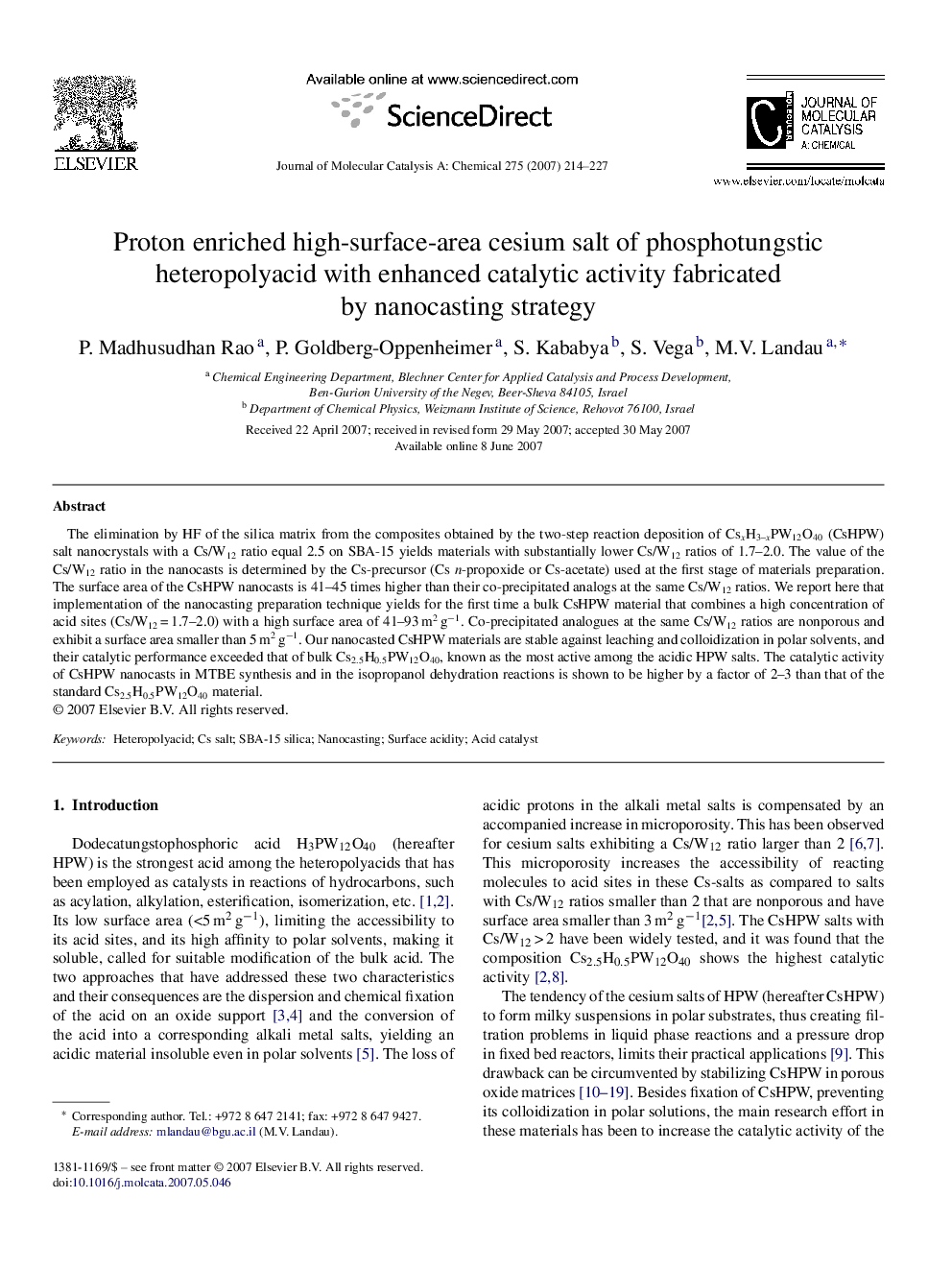| Article ID | Journal | Published Year | Pages | File Type |
|---|---|---|---|---|
| 67528 | Journal of Molecular Catalysis A: Chemical | 2007 | 14 Pages |
The elimination by HF of the silica matrix from the composites obtained by the two-step reaction deposition of CsxH3–xPW12O40 (CsHPW) salt nanocrystals with a Cs/W12 ratio equal 2.5 on SBA-15 yields materials with substantially lower Cs/W12 ratios of 1.7–2.0. The value of the Cs/W12 ratio in the nanocasts is determined by the Cs-precursor (Cs n-propoxide or Cs-acetate) used at the first stage of materials preparation. The surface area of the CsHPW nanocasts is 41–45 times higher than their co-precipitated analogs at the same Cs/W12 ratios. We report here that implementation of the nanocasting preparation technique yields for the first time a bulk CsHPW material that combines a high concentration of acid sites (Cs/W12 = 1.7–2.0) with a high surface area of 41–93 m2 g−1. Co-precipitated analogues at the same Cs/W12 ratios are nonporous and exhibit a surface area smaller than 5 m2 g−1. Our nanocasted CsHPW materials are stable against leaching and colloidization in polar solvents, and their catalytic performance exceeded that of bulk Cs2.5H0.5PW12O40, known as the most active among the acidic HPW salts. The catalytic activity of CsHPW nanocasts in MTBE synthesis and in the isopropanol dehydration reactions is shown to be higher by a factor of 2–3 than that of the standard Cs2.5H0.5PW12O40 material.
Graphical abstractFigure optionsDownload full-size imageDownload as PowerPoint slide
